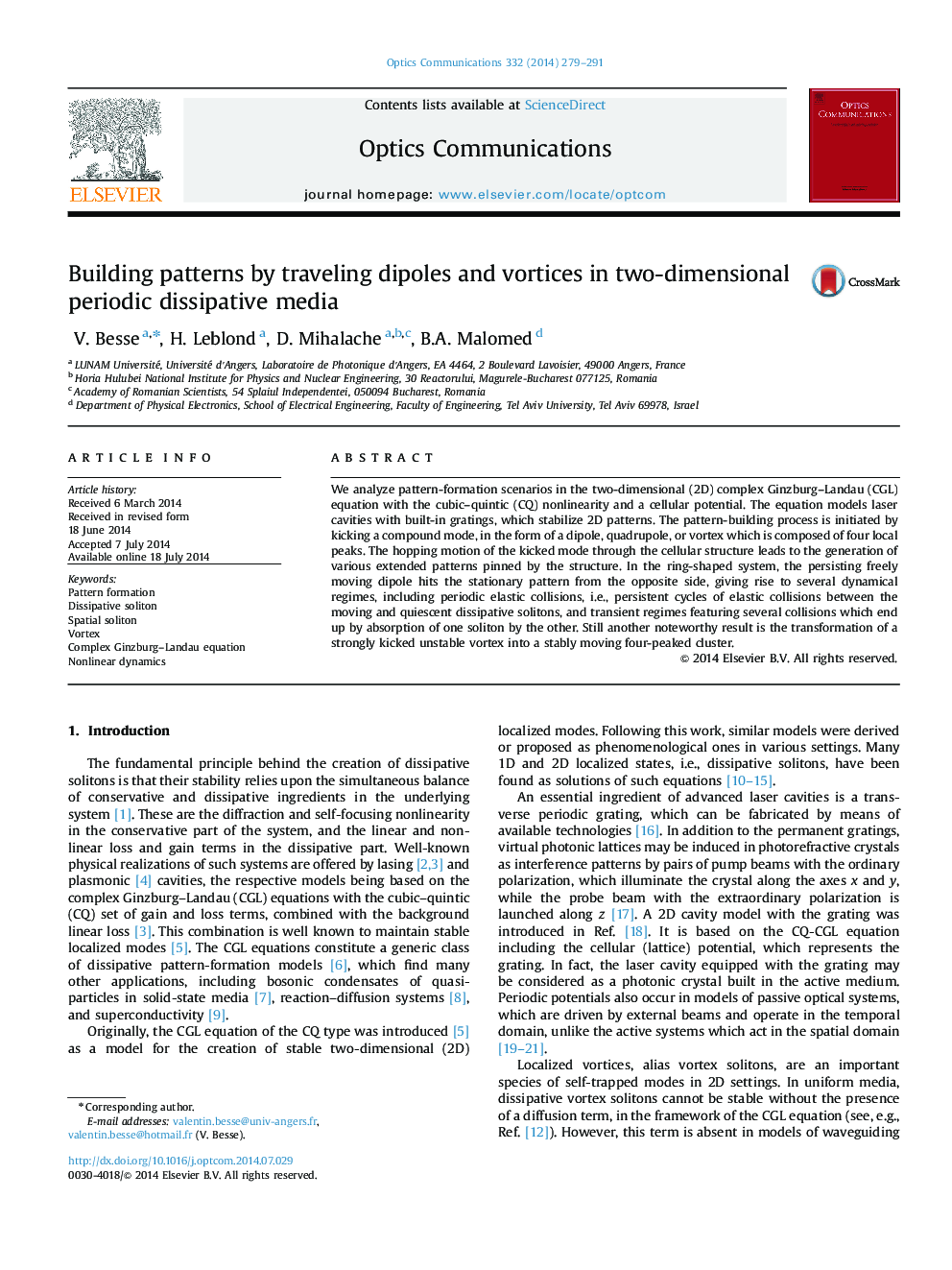| Article ID | Journal | Published Year | Pages | File Type |
|---|---|---|---|---|
| 1534231 | Optics Communications | 2014 | 13 Pages |
Abstract
We analyze pattern-formation scenarios in the two-dimensional (2D) complex Ginzburg-Landau (CGL) equation with the cubic-quintic (CQ) nonlinearity and a cellular potential. The equation models laser cavities with built-in gratings, which stabilize 2D patterns. The pattern-building process is initiated by kicking a compound mode, in the form of a dipole, quadrupole, or vortex which is composed of four local peaks. The hopping motion of the kicked mode through the cellular structure leads to the generation of various extended patterns pinned by the structure. In the ring-shaped system, the persisting freely moving dipole hits the stationary pattern from the opposite side, giving rise to several dynamical regimes, including periodic elastic collisions, i.e., persistent cycles of elastic collisions between the moving and quiescent dissipative solitons, and transient regimes featuring several collisions which end up by absorption of one soliton by the other. Still another noteworthy result is the transformation of a strongly kicked unstable vortex into a stably moving four-peaked cluster.
Keywords
Related Topics
Physical Sciences and Engineering
Materials Science
Electronic, Optical and Magnetic Materials
Authors
V. Besse, H. Leblond, D. Mihalache, B.A. Malomed,
